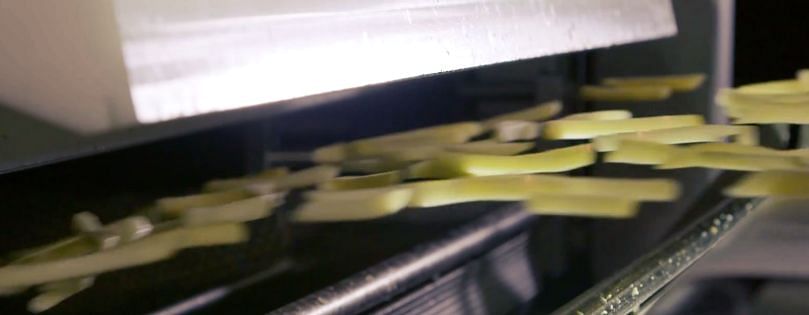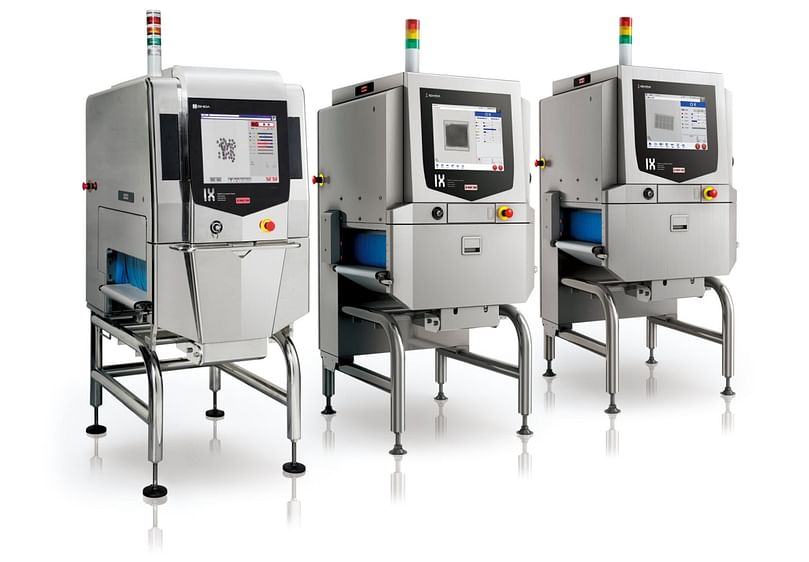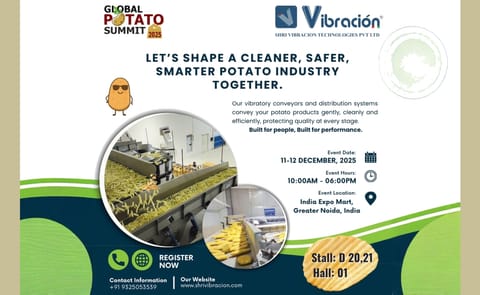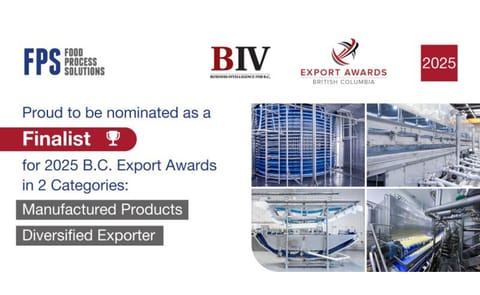Equipment manufacturer Heat and Control offers PotatoPro readers an overview of the increase in innovative technology that now provides systems that can not only detect, but can also operate simply, efficiently, and at high speed while collecting data to provide a transparency previously unachievable.
Exploring Inspection: The Journey to Quality Assurance

Meeting consumer expectations of food safety and consistency can be a defiing factor in
your brand’s success in the marketplace.
Equipment manufacturer Heat and Control offers PotatoPro readers an overview of the increase in innovative technology that now provides
systems that can not only detect, but can also operate simply, efficiently, and at high speed
while collecting data to provide a transparency previously unachievable.
With the market shift from a previous focus on quantity and price, to a more conscious market
focused on health-benefis, quality, and safety, inspection is now a crucial part of the food
manufacturing process.
The technology in this area of food manufacturing continues to advance
as companies strive to produce the highest quality products while reducing cost of ownership,
as well as risk.
Vision Inspection
One of the fist steps in the inspection journey occurs much earlier in the production line than
most other inspection technologies.
Irrelevant of your product type, food sorting technology is
critical to ensure the initial removal of foreign, potentially dangerous materials, as well as sort bad
from good produce.
Recent technology’s increase in efficiency and accuracy has boosted the ability to detect and remove the smallest of defects and foreign materials from production lines.
Food sorting equipment uses a variety of sensor technology such as high resolution cameras, laser, florescent lighting, pulsed LED sensor arrays and multi-wavelength bars, X-ray, CCD sensors, Shortwave Infrared (SWIR), and Near Infra-Red (NIR) spectroscopy. Each technology works to detect specific characteristics in the product flow to differentiate product from contaminants.
Factors as simple as colour and shape, to internal biological factors such as chemical content, elemental composition, and molecular structure, for example, measuring the chlorophyll, fat, or water content can be analysed to determine good or bad product.

Smart technology available allows even further control over the quality of your product
Metal Detection
Metal detection is an inspection process that can occur at several points throughout your production line. The primary purpose of installing metal detection is to identify ferrous (magnetic), non-ferrous metal contaminants in your product, for example aluminium, stainless steel, and even paint chips.
This, as most forms of inspection, is primarily for the quality control of your product and ultimately consumer protection, however metal detection units can also be used to protect machinery throughout your production line.
The smallest metal particles can lead to machinery malfunction, resulting in revenue decreases due to the need for production downtime to perform repairs, as well as the cost of the repairs themselves.
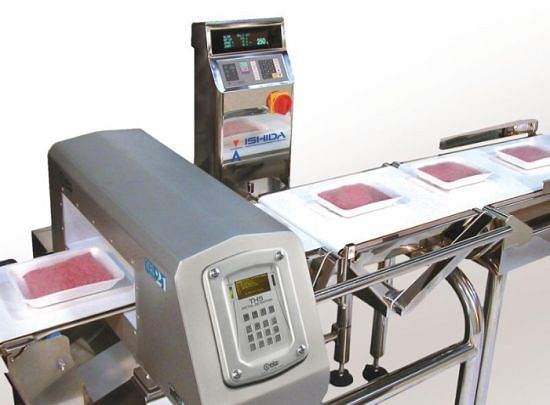
Ishida DACS checkweigher combined with a CEIA MS21 Metal Detector
Metal detector systems designed for foil-packed products also contain a system of coils, however differ in their working in that they are designed with a tunnel or passage that is subjected to a strong magnetic field. Any ferrous particle passing under the series of coils is magnetised, generating a current that is amplified and alerts the detection system of the contaminant.
There are a variety of controls that are available to work in conjunction with the signal processor in either design of detector.
All work similarly in that the signal produced by the contaminant is analysed to provide amplitude and phase information. Most metal detectors are fited with an automatic rejection unit that, if the product is deemed corrupted, will reject the product from the line.
Although metal particles are able to be detected by other forms of inspection systems, metal detection systems are separated by their level of sensitivity.
Cutting edge technology in metal detection has seen the invention of a multi-spectrum system.
This new generation of metal detector is capable of eliminating false rejects without reducing sensitivity. Using proprietary multi-spectrum technology, it is able to consistently detect smaller metal particles in difficult products like wet spinach, cheese, tortillas, and ground beef.
Seal Checking
Seal checking or testing is used to detect leakage as well as identify trends that may give early warning of deterioration in the sealing process, while being gentle and non-destructive to the product. This is an integral step of the inspection process for the reduction of waste as well as product integrity prior to it reaching retailers.
This process can be used to establish the maximum safe pressure that can be applied to a specifi product. If a product is deemed to be to be non-compliant, the seal check’s rejection system will remove the item from the production line, assuring the integrity of all packages reaching the distribution end of the line.
Checkweighing
Checkweighing is a required step of inspection as it ensures the weight of a pack is within specific parameters, ready for distribution. Checkweighers can be used in wide range of applications including snacks and confectionery, ready meals, meat and poultry, fresh produce, dry and frozen foods, bakery, pasta, pharmaceuticals and non-food products.
Advances in technology have seen vast improvements in two of the fundamental requirements of a checkweighing system, speed, ensuring minimum production time is lost, and accuracy. New state-of-the-art weigh cell design technology provides exceptionally reliable speed and accuracy, improving quality control, and reduced maintenance in the harshest of environments.
X-Ray
Used in conjunction with metal detection, seal checking, and checkweigher technology, an X-ray inspection system is the final check in a complete inspection line. X-ray inspection is a way of identifying inconsistencies, physical defects, and/or contaminants in product packaged in a pouch, bottle, can, jar, or flow of product passing through the system, without damaging the food product.
Contaminants can be foreign bodies in the product such as pieces of glass, stone, shell, pebbles, bone, plastics including hard rubber, Nylon, PVC, and Teflon, as well as metals such as steel, iron, and aluminium. X-rays are a form of electromagnetic wave of high energy and short wavelengths that are able to pass through food products.
X-ray inspection systems function by passing an X-ray beam through an item as it moves along the line. As the X-ray beam passes through the item, it is converted into a greyscale image that can be easily scrutinised and recorded for historical traceability records. Contaminants denser than the product will present in this image as darker, whereas voids or missing pieces will present as lighter. This forms the basis of identification.
X-ray inspection systems can be programed to check multiple quality parameters easily and at high speed, allowing the possibility for the addition of new, more intricate parameters to what had previously been checked. The result is an increase in food/product quality, ultimately raising standards and increasing competitiveness within your market.
Choosing a Supplier
Purchasing equipment is an extremely important investment that will have a great impact on the overall profiability of your product. A supplier that has a long history in the manufacturing industry, with a proven global record in outstanding service can be a valuable partner to the success of your company.
It is important when considering a supplier you take into account not only the initial purchase, but the long-term contract you will have with that supplier, including up-front application assistance, training, parts supply, and technical support.
It is also vital they are able to provide advice on a tailored solution that will be of most value to you, possibly including various integrated machinery, for example, the combination of a total metal detector and checkweigher system, or the integration of new machinery into your already existing line.
The ability to offer trial demonstrations with your product to properly evaluate the system’s performance is also extremely valuable. This gives you the opportunity to have first-hand experience with the set-up and changeover of the equipment, its integration with other equipment, general quality, and level of service provided by the supplier.

